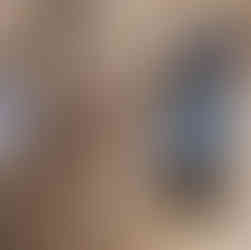Holy Trinity, a Priory in an office block
- London On The Ground
- Oct 14, 2023
- 3 min read
A medieval stone arch in a modern building in the City of London.

The combination encapsulates much about the history of the City, now London's financial district.
London On The Ground tours available for booking
For my schedule of forthcoming walks and events, please click here.
The arch and the adjoining wall sections are all that remains of the Holy Trinity Priory. They date from the 12th, 14th and 15th centuries and were once part of the Priory Church.

They stand inside a modern co-working office block run by WeWork. You can see this somewhat anomalous structure behind the reception desk after entering the building from Leadenhall Street, and also glimpse at it through the window on the other side of the building on Mitre Street.
Click on an image to enlarge
Holy Trinity Priory was founded in 1108 by Queen Matilda, daughter-in-law of William the Conqueror and wife of King Henry I. It was built just inside the ancient City wall in the east of the City, close to the gate known as Aldgate.
The picture below shows a reconstruction of Holy Trinity Priory viewed from the east, as it might have appeared in c1500. The City wall and Aldgate are clearly visible, as is the Priory Church.
The arch that remains once formed a divide between the south aisle of the church and an adjoining chapel (on the left of the picture, about half way up).

Holy Trinity Priory, also known as Christchurch Aldagte, was the earliest and richest of London's monastic houses. It became the second biggest landowner in London (after the Crown) until it was closed in the 16th century under the Dissolution of the Monasteries.
Headed by a Prior, who was also an Alderman of the City of London, its members consisted of between 16 and 40 canons. Its population was boosted in 1125, when an ancient guild of knights, known as the Cnihtengild, sold its nearby land to the Priory and entered the house as canons (read London knights: Cnihtengild statue guards Devonshire Square).
Holy Trinity was popular with royalty and the elite. Two of the children of King Stephen were buried at the Priory in the 1100s. London's first and longest serving Mayor, Henry Fitzailwyn, was buried here in 1212.
It was the first of the great religious houses to be closed by Henry VIII in 1532, three years before the general Dissolution.
The Priory then passed to Thomas Audley, Speaker of the House of Commons, who became Lord Chancellor and was significant in Henry VIII's break with the church in Rome. He converted the buildings into a house, which often found use as a gaol for those accused of treason.
In 1544 the site became the property of Thomas Howard, Duke of Norfolk, who also owned the Charterhouse just north of Smithfield (and was executed for plotting against Queen Elizabeth I). Duke's Place, a street running along the northeast border of the former Priory site (along the line of the City wall) takes its name from him.
Echoes of the Priory can also be found in other street names. Mitre Street is roughly where the nave of the Priory Church once ran, while Mitre Square is the site of its former cloister.
In 1592 the Holy Trinity Priory site was sold to the Lord Mayor and commonalty of the City of London (in other words, the City of London Corporation). Over time, its buildings were sold or given away, altered, demolished and replaced. A former Priory chapel on what is now Leadenhall Street became the parish church St Katherine Cree, rebuilt in 1631.
By the mid 19th century, almost nothing was left of the Priory, apart from the wall and arches today engulfed by the WeWork office building.

Just before the Dissolution of the Monasteries, there were in the region of 25 monastic houses (monasteries, priories, nunneries and so on) in and around the City of London, owning approximately 60% of the land.
The Dissolution led to fundamental changes in the social and physical fabric of the City.
Members of the nobility and, in particular, wealthy City merchants became major landowners in London (in addition to the City Corporation itself).
Philanthropic services could no longer be provided by the religious houses. Their former land was repurposed for more commercial use and building density increased.
This process of property development continues in the City of London, where the ancient can still be found amid the modern.
Click on an image to enlarge
The WeWork building, and a glimpse of the stone arch of Holy Trinity Priory, can be seen on my walking tour Secret City Spaces East, next available on 29 October at 11am.
London On The Ground tours available for booking
For my schedule of forthcoming walks and events, please click here.



















Comments